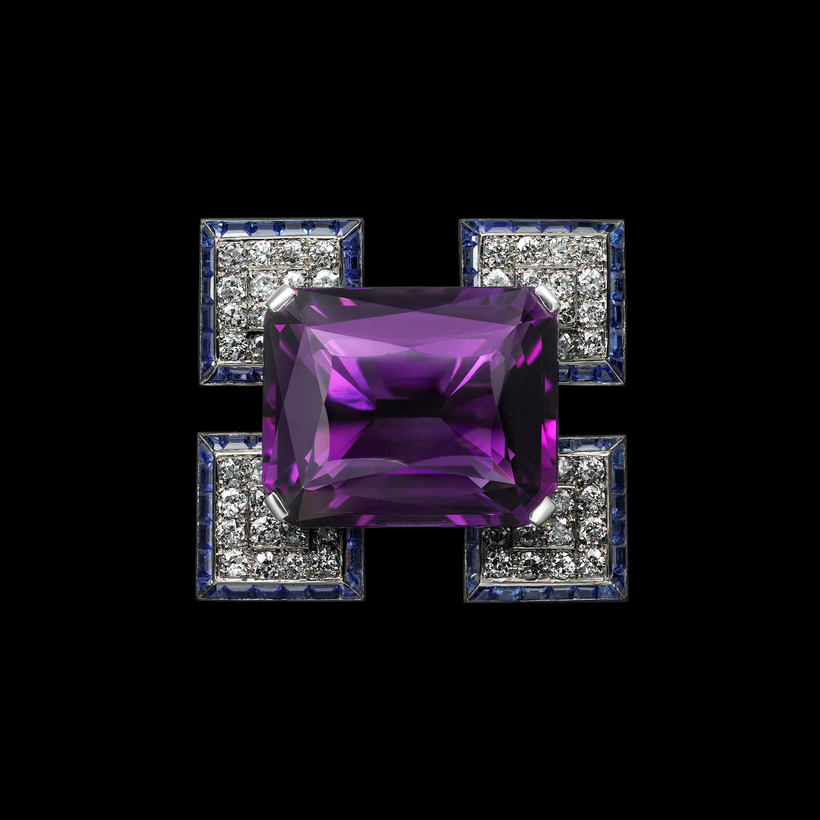“We don’t make jewels,” my great-grandfather Jacques Cartier explained a century ago. “We create them … one by one for each client.” As head of the jeweler’s London branch for the first half of the 20th century, Jacques lived by the principle that “the guiding force of art, beauty, and originality” infused everything Cartier created.
This exhibition brings his words to life.
The sheer scale of Cartier’s artistry becomes apparent as one moves through the show, on now at the Victoria and Albert Museum. Brooches, tiaras, necklaces, mystery clocks, vanity cases, watches, objets d’art, and turban ornaments gleam under perfect lighting, while their former owners—maharajas, princesses, queens, and Hollywood stars—reappear in archival footage.
Yet, at the entrance, viewers are greeted not by glittering diamonds but by a letter.

Intimate World War I–era exchanges between the Cartier brothers—Louis, who ran the Paris branch; Pierre, who ran the New York branch; and Jacques—are shown and played overhead in French-accented voices. Their talk of shared dreams for the “greatness of our family business” reminds us that Cartier, founded by the brothers’ grandfather, Louis-François Cartier, in 1847, wasn’t always a global brand. For decades, it was a close-knit sibling partnership, struggling to survive and stay true to its values.
Following the letter, a room titled In Search of a Style groups creations according to the countries that inspired them. Delicate, garland-style jewels influenced by Parisian wrought-iron work define the French section, while geometric designs evoke Islamic inspirations. The Egypt section sees brightly colored scarab brooches set with ancient faiences.
There’s a challenge posed by the Russia section: Can you distinguish between Cartier and Fabergé? And the India section features a carved Mughal emerald and rock crystal necklace made for the writer Vita Sackville-West, a friend of Jacques’s.

Often overshadowed by Paris, Cartier London is finally given its due by the V&A exhibition’s curators, Helen Molesworth and Rachel Garrahan. “From the brothers’ early relationship with Edward VII to Jacques’s travels in India and Jean-Jacques’s iconic 1960s watches,” Garrahan explains, “London was central to Cartier’s creative development and commercial success.” (Jean-Jacques Cartier, my grandfather, ran the jeweler’s London branch from 1945 to 1974.)
Cartier London opened in 1902 at the behest of the soon-to-be King Edward VII, who wanted his coronation guests to be able to buy tiaras from his favorite Parisian jeweler without crossing the Channel. King Charles has lent several pieces to the exhibition, including his late mother’s Williamson diamond-flower brooch, commissioned by Queen Elizabeth in 1953 and on display for the first time alongside original sketches by its designer, Frederick Mew, whose archive was recently bequeathed to the V&A.

Beyond the royal jewels, a section on W.W. II features a caged bird symbolizing occupied Paris (yet carefully sidesteps details of how the Cartier store, on 13 Rue de la Paix, stayed open throughout the war, in part, by selling rubies to Nazi official Hermann Göring). Other pieces from this period include the Duchess of Windsor’s Flamingo brooch (shown alongside her big-cat jewels), while the postwar austerity period features Mew’s joyful designs for more affordable bird jewels, alongside chirpy bejeweled brooches.
Cherished family pieces appear throughout the show. A 1930s geometric brooch of amethyst, diamond, and sapphire, designed by my great-grandfather for his adored American wife, Nelly, symbolizes their happy years together: her birthstone was amethyst, his was sapphire, and their four children are represented by the diamond corners. And the never-before-seen 1960s Cartier London Stag Brooch, made for my grandmother’s sister Princess Lilian de Réthy of Belgium, was my grandfather’s proudest accomplishment. (The stories he told me about its extraordinary creation led to my chapter in the exhibition book.)

Watch enthusiasts will appreciate the bold and rare Cartier London timepieces conceived under the creative partnership of my grandfather and watch designer Rupert Emmerson in the 1960s and 1970s. An original Cartier Crash—more recently adopted by Tyler, the Creator (who loaned another of his watches to the show)—appears alongside the Pebble, the Double-Strap, and a 90-degree rotated Oval being shown for the first time.
Hollywood fans, too, will be pleased to enter a room that brings the jewels of Grace Kelly, Elizabeth Taylor, and Gloria Swanson to life. The exhibition culminates with a dazzling display of tiaras.

When I asked my modest grandfather what made Cartier’s creations so special, he spoke of the many gifted craftsmen behind each piece, the quest for the highest-quality gems, and the purity and originality of the Cartier style—“never copy, only create,” was the family motto.
But he also urged me to see the pieces firsthand, and this exhibition offers that opportunity. The beauty on display is mind-blowing. Even after three visits, I can’t wait to go back.
“Cartier” is on at the Victoria and Albert Museum, in London, until November 16
Francesca Cartier Brickell will be giving a talk in person at the V&A and online on the evening of June 19. She is the author of The Cartiers: The Untold Story of the Family Behind the Jewelry Empire

